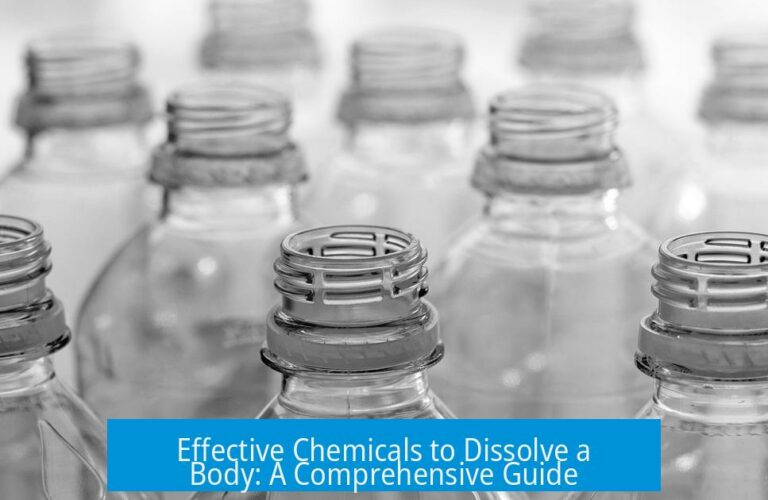Understanding Bleach and Its Effect on Metals

Bleach acts as an oxidizing agent that can corrode and damage many metals, making it generally unsuitable for cleaning metal surfaces due to its inability to remove organic buildup effectively. This core fact guides how bleach should be used, or avoided, when dealing with metal items.
Bleach Is a Strong Oxidizer
Bleach contains compounds, primarily sodium hypochlorite (NaOCl), which function as potent oxidizers. This means bleach can react chemically with many metal surfaces. Oxidation caused by bleach often results in corrosion, discoloration, or deterioration of the metal structure.
Its strong oxidative power is why bleach is popular as a disinfectant and whitening agent. However, this same property can damage metals by promoting rust or pitting.
Bleach Does Not Remove Gunk Effectively
While bleach oxidizes metals, it does not act well as a degreaser or cleaner for organic residues and tough “gunk”. Unlike alkalis or detergents that dissolve oils and organic matter, bleach’s chemistry is not suited to break down physical grime on metal surfaces.
Therefore, bleach should not be relied upon to cleanse dirty metal containers or tools.
Guidelines for Using Bleach with Metal
When considering bleach for metal cleaning, it is crucial to minimize contact time and rinse thoroughly. Prolonged exposure increases the risk of metal damage.
Here are clear recommendations:
- Limit bleach exposure to mere minutes if necessary.
- Immediately wash the metal item with plenty of water after bleach application.
- If the metal type is unknown, avoid using bleach entirely to prevent unforeseen corrosion.
Following these restrictions can reduce but not eliminate the risk of damage.
Special Considerations for Different Metals
| Metal Type | Bleach Suitability | Potential Effects |
|---|---|---|
| Stainless Steel | Minimal to no direct bleach use recommended | May resist corrosion but bleach can cause surface dulling or pitting |
| Aluminum | Do not use bleach | Rapid corrosion, surface damage, and weakening |
| Iron/Steel (non-stainless) | Do not use bleach | Accelerated rust formation and deterioration |
Effective Alternatives to Bleach for Metal Cleaning
Since bleach is neither safe nor effective for cleaning metals, other agents provide better alternatives for specific metal types and purposes.
Using Strong Alkalis for Stainless Steel
Strong alkali solutions such as sodium hydroxide (NaOH) dissolve organic material and grease more effectively than bleach, without aggressively oxidizing stainless steel. This method suits cleaning gunk off stainless steel containers.
For example, filling a stainless steel flask with water and NaOH granules and letting it sit overnight cleans residue efficiently.
Avoid Alkalis and Bleach on Aluminum
Aluminum is highly reactive with both alkalis and oxidizers. These chemicals corrode aluminum rapidly, leading to surface degradation and structural weakness.
Thus, neither bleach nor alkaline cleaners should be used on aluminum metal surfaces.
Safe Cleaning Methods for Metal Containers and Thermoses
For household metal containers, such as thermoses or Nalgene bottles with metal components, safer and more effective cleaning options exist:
- Add a small amount of mild dishwasher detergent to the container, fill with boiling water, and let it sit for an hour to loosen residue. Use a bottle brush for scrubbing.
- Use baking soda (sodium bicarbonate) in boiling water to soak overnight, effectively neutralizing odors and loosening stains.
- Denture cleaning tablets submerged in warm water also help remove organic stains and odors effectively.
- Soaking in white vinegar can address persistent smells and provide mild descaling action.
- Mechanical cleaning tools such as bottle brushes or sponge-on-a-stick devices reach difficult inner surfaces.
- Some users apply Mr. Clean Magic Erasers gently to clean tea or coffee stains, but caution is necessary to avoid scratching sensitive surfaces.
- Steel wool, although abrasive and effective for rust, should be used cautiously to avoid damaging polished or coated metal.
These approaches focus on non-oxidizing, mild cleaning agents combined with physical cleaning to protect the metal’s integrity.
Precautions to Avoid Metal Damage
Stainless steel and other metals can scratch or dull if abrasive materials are used excessively.
Scratches create sites where dirt and gunk can accumulate more easily, making cleaning harder over time.
Choosing non-abrasive or soft cleaning materials helps maintain the surface smoothness, prolonging the item’s lifespan.
Summary of Bleach Usage on Metal Items
| Fact | Details |
| Bleach’s Role | Strong oxidizing agent that damages many metals |
| Cleaning Ability | Poor degreasing or gunk removal on metal surfaces |
| Risk on Aluminum | Causes rapid corrosion; avoid use |
| Recommended for Stainless Steel? | No direct bleach use; better cleaned with alkali or mild detergents |
| Alternatives | Mild detergent, baking soda solution, vinegar soak, denture tablets, physical cleaning |
| Usage Advice | If uncertain about metal type, avoid bleach; rinse well if used briefly |
Bleach is a poor choice for cleaning metal containers due to its oxidative damage and limited cleaning effectiveness. Selecting proper cleaning agents and methods protects metal items and ensures thorough, safe cleaning.
Key Takeaways
- Bleach oxidizes metals and can cause corrosion — avoid prolonged contact.
- Bleach does not effectively clean organic gunk or residues on metals.
- Avoid bleach and alkalis on aluminum due to rapid corrosion risk.
- Use mild detergents, sodium bicarbonate, vinegar, or denture tablets for cleaning metal containers.
- Mechanical cleaning tools should be non-abrasive to protect metal surfaces.
- When unsure of metal type, do not use bleach; rinse immediately if(contact occurs.





Leave a Comment